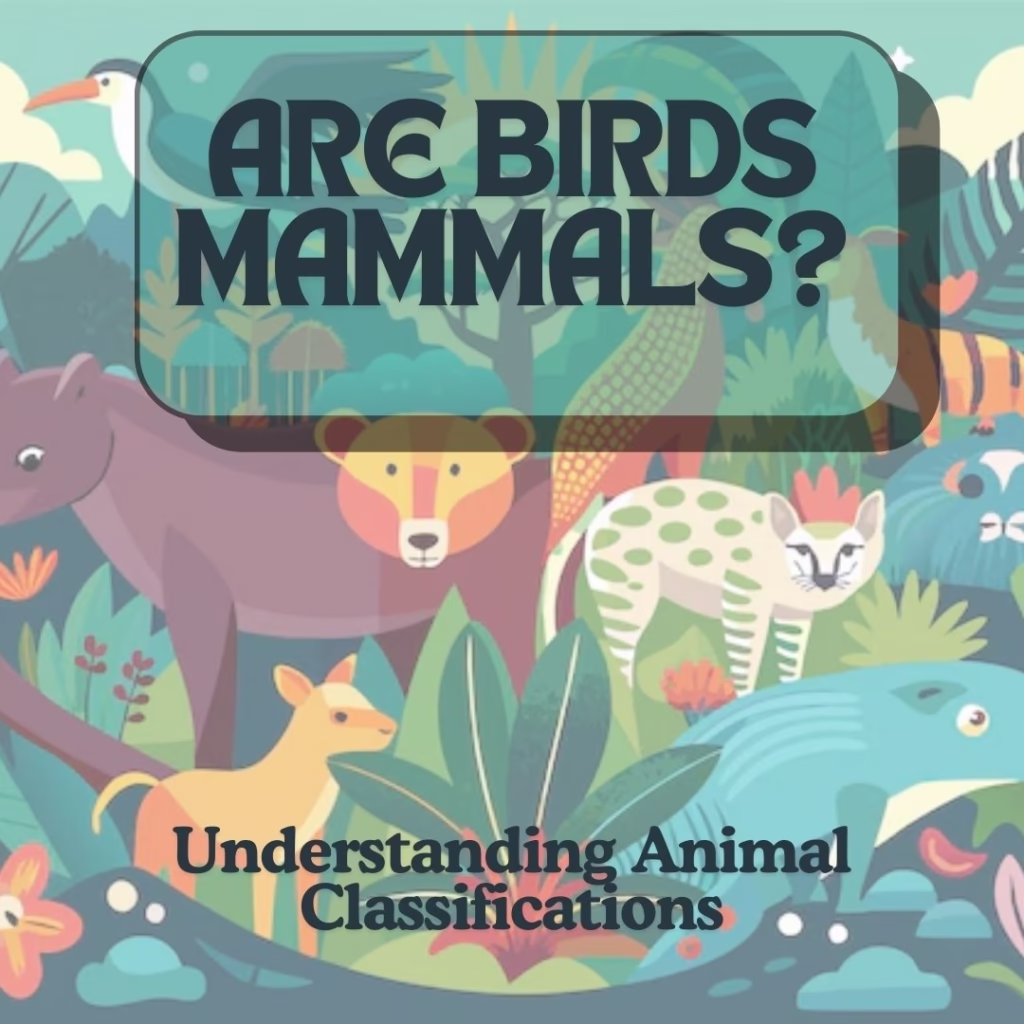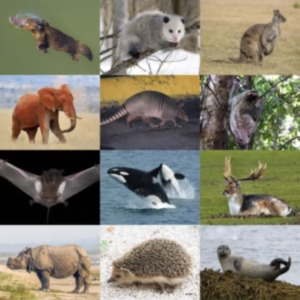Animals are categorized into groups based on specific traits, which often leads to questions about how many species exist. A common misconception is that birds can be classified as mammals. While both groups are warm-blooded and display complex behaviors, recognizing their fundamental differences is crucial for accurate classification.
Mammals have fur or hair and typically give live birth, whereas birds are characterized by feathers, beaks, and the ability to lay eggs with hard shells. Additionally, mammals have mammary glands that produce milk for their young, a feature that birds lack. Recognizing these distinctions clarifies the unique characteristics of each group and highlights the importance of accurate animal classification in biological studies.
Defining Birds and Mammals

What Are Birds?
Birds (Aves) are a group of animals with backbones that evolved from dinosaurs. They are warm-blooded, and their feathers help minimize heat loss. Birds possess a strong yet lightweight skeleton and maintain a high metabolic rate, supported by their four-chambered heart. Unlike their prehistoric ancestors, modern birds do not have teeth; instead, they have beaked jaws. They also lay eggs with hard shells, which protect the developing embryos.
Birds are found all over the world, with sizes ranging from the tiny 5 cm (2 in) bee hummingbird to the large 2.0 m (9 ft) ostrich. The hard-shelled eggs they lay contribute to the safety of their young. These characteristics not only enable birds to thrive in a variety of environments but also showcase the evolutionary adaptations that have made them successful flyers and distinctive members of the animal kingdom.
What Are Mammals?
Mammals are defined by their fur or hair and mammary glands that produce milk for nursing their young. They are warm-blooded and most give live birth. Mammals fall into three main groups: placental mammals, marsupials, and monotremes. What sets mammals apart from other vertebrates is their ability to produce milk and their hair, which provides insulation and helps them thrive in a variety of climates.
This diverse group includes around 5,000 to 5,500 species, each adapted to different environments. While many mammals live on land, some, like seals, otters, and dolphins, have adapted to life in the water. Bats are a unique example, as they are the only mammals capable of sustained flight.
Mammals have successfully colonized numerous ecosystems, including extreme environments such as polar regions and alpine mountains. Their adaptability is particularly evident in humans, a species that has significantly influenced the planet.
Key Differences Between Birds and Mammals
Body Temperature Regulation
Mammals are also warm-blooded and rely on fur or hair for insulation, which varies in thickness and texture based on the species and environment. Some mammals possess specialized adaptations, such as blubber, to provide additional warmth in cold habitats.
Reproductive Methods
Birds lay eggs, which typically have hard shells that protect the developing embryos. Depending on the species, they may exhibit varying parental care behaviors, such as incubating the eggs and feeding the chicks after hatching.
Respiratory Systems
Skeletal Structure
Evolutionary Background
Birds and mammals showcase distinct evolutionary lineages that reflect their separate developmental paths. Birds belong to the class Aves and are closely related to reptiles. This connection is evident in various anatomical and behavioral traits, as birds evolved from theropod dinosaurs and diverged from common ancestors shared with reptiles.
Conversely, mammals evolved from early synapsids, a group of reptiles that exhibited some mammalian characteristics. This divergence resulted in the development of unique traits such as fur, mammary glands, and specialized teeth. The evolutionary trajectories of birds and mammals illustrate the diverse adaptations that have emerged over millions of years, enabling each group to thrive in different ecological niches. Understanding these lineages offers valuable insights into the complexities of vertebrate evolution and the relationships among various animal classes.
Unique Characteristics
Birds
To make them unique, birds have unique features. They can fly, have different types of beaks suited for various foods, and migrate long distances. Their sharp eyesight and social behaviors help them to survive and thrive in their surroundings. Together, these traits show how diverse and adaptable birds are in different habitats.
Mammals
- The misconception that birds are mammals often stems from their shared trait of being warm-blooded (endothermic).
- Both birds and mammals exhibit parental care, which can further blur the lines between the two groups.
- Birds belong to the class Aves, while mammals are classified under the class Mammalia, indicating their distinct evolutionary histories.
- Birds are characterized by feathers and beaks, whereas mammals have fur or hair and mammary glands for nursing.
- Most birds lay eggs with hard shells, while most mammals give live birth and nurse their young.
Clarifying these differences enhances our understanding of the unique traits that separate birds from mammals.
Are Bats Birds?
Bats are not classified as birds; they belong to the order Chiroptera, which is distinct from avian species. While both groups share the ability to fly, they exhibit significant biological and evolutionary differences. The following sections outline these distinctions.
Taxonomic Classification
- Bats are mammals, characterized by features such as fur, mammary glands, and live births, unlike birds, which are oviparous and have feathers.
- The evolutionary lineage of bats diverges from that of birds, with bats being more closely related to other mammals than to avians (Song et al., 2020).
Flight Mechanisms
- Bats utilize a unique wing structure formed by a membrane stretched between elongated fingers, contrasting with the feathered wings of birds (Guglielmo, 2018).
- Both groups exhibit adaptations for flight, but their physiological mechanisms differ significantly, particularly in energy metabolism during migration (Guglielmo, 2018).
Vocalization and Communication
- Bats can produce complex vocalizations similar to bird songs, indicating advanced communication skills; however, this does not imply they share a common ancestry with birds.
Conclusion
- Are birds considered mammals?
No, birds are classified as a separate group called Aves. - What makes a bird different from a mammal?
Birds have feathers, lay eggs, and have a unique respiratory system. - Do birds have fur?
No, birds have feathers instead of fur or hair. - Do any mammals lay eggs?
Yes, monotremes like the platypus lay eggs. - Are all birds capable of flight?
No, some birds like ostriches and penguins do not fly. - Can mammals have feathers?
No, mammals do not have feathers, only fur or hair. - What do birds and mammals have in common?
Both are warm-blooded and provide parental care to their young. - Do birds produce milk?
No, only mammals produce milk for their offspring. - Are bats birds?
No, bats are mammals with wings, not birds. Bats are mammals that belong to the order Chiroptera. - Why do people think birds are mammals?
The misconception may come from shared traits like warm-bloodedness and care for the young.
If you like this article, here are some of our recent post.
Thank you for reading, for more interesting articles visit our homepage.








